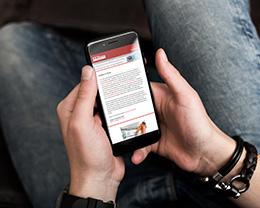The global health pandemic brought about seismic challenges for nations worldwide. Many countries are under pressure from a combination of increased strain on healthcare systems and staff shortages due to illness, quarantines or a multitude of care duties.
The unprecedented situation has demonstrated just how critical it is to improve the resilience of healthcare systems.
How 5G connectivity can help address these challenges
The healthcare sector has a reputation for slow pace of change and reliance on traditional ‘patient touchpoints’. Long waiting times and bureaucratic processes reliant on paperwork often leave patients feeling like they have received inadequate care.
We’re at an inflection point in the consumerisation of healthcare, driven by evolving patient expectations and new and advancing health tech, accelerating the shift toward more personalised and convenient care. There is a push to lower the barriers to healthcare with advanced telehealth services and tech-enabled home care that will define the healthcare systems of the future.
The pandemic has accelerated interest in ‘smart’ cities and telehealth, and their potential benefits – particularly how they could help us respond more effectively and, in turn, protect us and improve people’s quality of life.
By improving connectivity in a smart city, citizens can be better informed and safer as they go about their daily lives. For example, hotspots where there has been an outbreak of seasonal flu can be flagged to those with a weak immune system so they can avoid it. They can be notified about high pollution levels – beneficial for those with a medical condition that would be aggravated by pollution.
Unique advantages of mmWave technology
The mmWave spectrum enables high-speed wireless connections which can carry more data and deliver superior latency. The increased bandwidth of 5G networks, especially in the mmWave bands, can offer enormous potential for a whole range of new applications, such as smart cities and telehealth, that have not been possible up until now.
By using licence-exempt mmWave spectrum, healthcare organisations and public authorities can control their own private networks and leverage high-capacity equipment for specific use cases.
It can often be challenging to provide access from the small cell to the core network for internet connectivity in dense urban environments. However, unlicensed mmWave equipment can provide a high-speed wireless connection from each small cell back to the core network, which speeds up the deployment of 5G by reducing the time and cost of deploying where fibre isn’t an option.

Examples of healthcare applications in Liverpool 5G testbed
mmWave technology is being implemented in tests and trials in the UK, one of which is the Liverpool 5G Create project, which is part of the DCMS-funded 5G Testbeds and Trials Programme. This project has built a private, independent 5G network in and around Kensington, Liverpool, to support 5G-enabled health, social care, and education applications for the local community.
The project uses Blu Wireless’s mmWave technology to provide coverage in densely populated city streets to create a ‘network-of-networks’. The hybrid consolidation uses mmWave backhaul, LoRaWan, and more recently, Telet Research’s 5G small cell network and roaming technologies. This takes advantage of mmWave’s speed, capacity, and bandwidth for a range of applications, including an anti-anxiety app for younger children (on wearables); AI-supported mobile pressure ulcer monitor; a ‘haptic hug’ for people at care homes; sensors to prevent falls; and 5G support for education and community groups.
Liverpool 5G also delivers several innovative solutions, such as a loneliness app, ‘Push to Talk’ that links older people for a chat and ‘The Loneliness Quiz and Bingo App’ that builds social connections for people with a learning disability. The Royal Liverpool and Broadgreen University Hospitals NHS Trust ‘Telehealth in a Box’ connects the hospital with community patients, whilst 5G supports pain distraction VR headsets for palliative care.
The 5G connectivity is provided free to people taking part in the project, reducing the digital divide and ensuring the community has equal access to the life-changing technologies they need.
Looking ahead to future connectivity projects
The Liverpool 5G testbed has resulted in a number of key learnings, which will be used to enrich future healthcare and smart city connectivity projects. The first learning was just how important it is to fit the technology to the need, not the need to the technology when identifying potential health and social care technology applications. Additionally, it was clear that people also need to be ready to accept new technology and have the relevant support and guidance to make it work for all involved. For that, they must have a close positive working relationship with the healthcare providers.
To ensure future success, this kind of project needs to evolve into long-term services in order to fully realise the potential of 5G networks and really make a positive impact on societal health outcomes.
Read also:
Abbott Prepares for a Telehealth Future
Next-Gen Wearables Enable a Holistic Approach to Remote Patient Monitoring
Sign up for our weekly NewsletterShare this:
Neill YoungNeill Young is business development director and verticals lead at Blu Wireless. Young has over 20 years experience of industrial mobile telecommunications from Tetra to 5G. Focused primarily on strategy and delivery of industrial IoT and private networks he has experience across multiple verticals including manufacturing, logistics, utilities, smart cities and transportation. Today, Young is working on industrial digital transformation through the use of high bandwidth 5G mmWave networks for private networks, backhaul and new data intensive use cases.
Tags: IoT, Medical, Wireless







